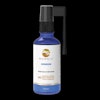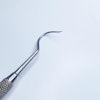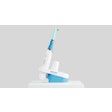
Almost 80% of U.S. children and adolescents began brushing their teeth at or before their first birthday, according to a new report from the U.S. Centers for Disease Control and Prevention (CDC). However, nearly 40% of children ages 3 to 6 are using too much toothpaste when they brush.
Researchers used data from the National Health and Nutrition Examination Survey (NHANES) from 2013 to 2016 to evaluate more than 5,100 children and adolescents. They concluded that all healthcare professionals could better educate parents about the recommended amount of fluoride toothpaste. The survey was published on February 1 in the Morbidity and Mortality Weekly Report.
"Healthcare professionals and their organizations have an opportunity to educate parents and caregivers about recommended toothbrushing practices to ensure that children are getting the maximum preventive effect by using the recommended amount of fluoride toothpaste," wrote the group led by Gina Thornton-Evans, DDS, from the CDC's National Center for Chronic Disease Prevention and Health Promotion in Atlanta.
Starting point
The researchers' goal was to study the patterns of toothbrushing and toothpaste use among children and adolescents by analyzing responses from parents or caregivers to survey questions. They utilized NHANES data, which provides representative information about the health status of children and adults in the U.S.
More than 5,100 U.S. children and adolescents ages 3 to 15 years were included in the analysis:
- Just over half were non-Hispanic white.
- More than 14% were non-Hispanic black.
- Almost 16% were Mexican-American.
Most of the respondents indicated that toothbrushing began at age 1 (see table below).
| Age at which children started brushing | ||||
| < 1 year | 1 year | 2 years | ≥ 3 years | |
| Total | 20.1% | 38.8% | 26.6% | 14.5% |
| Ethnicity | ||||
| White | 22.9% | 40.8% | 24.9% | 11.4% |
| Black | 18.6% | 40.0% | 27.4% | 13.9% |
| Mexican-American | 15.4% | 33.9% | 28.1% | 22.6% |
| Poverty status | ||||
| < 100% Federal Poverty Level (FPL) | 18.0% | 35.8% | 27.6% | 18.5% |
| 100%-199% FPL | 18.0% | 39.4% | 28.8% | 13.8% |
| ≥ 200% FPL | 23.0% | 40.1% | 24.5% | 12.4% |
The researchers also reported that almost 40% of children ages 3 to 6 used more toothpaste than recommended. The ADA and other organizations recommend that toothbrushing begin when the first tooth erupts, and children younger than 3 years should use a smear of toothpaste the size of a rice grain.
Children 3 to 6 years should use a pea-sized amount of toothpaste. Dr. Thornton-Evans and colleagues found the following in the 3- to 6-year age group:
- More than 12% used a smear.
- Almost half used a pea-sized amount.
- More than 20% used a half load.
- Almost 18% used a full load.
“Careful supervision of fluoride intake improves the preventive benefit of fluoride.”
Not optimal
The researchers reported three limitations to their study:
- The results are based on parents' self-reports, so reporting bias is possible.
- The question about the amount of toothpaste used focused on the amount currently used and, therefore, might overestimate the amount that was used at younger ages.
- The type of toothpaste (fluoride versus nonfluoride) was not specified.
The findings suggest that children and adolescents are engaging in appropriate daily preventive dental health practices, but the implementation is not optimal, the researchers concluded.
"Careful supervision of fluoride intake improves the preventive benefit of fluoride, while reducing the chance that young children might ingest too much fluoride during critical times of enamel formation of the secondary teeth," they wrote.



















